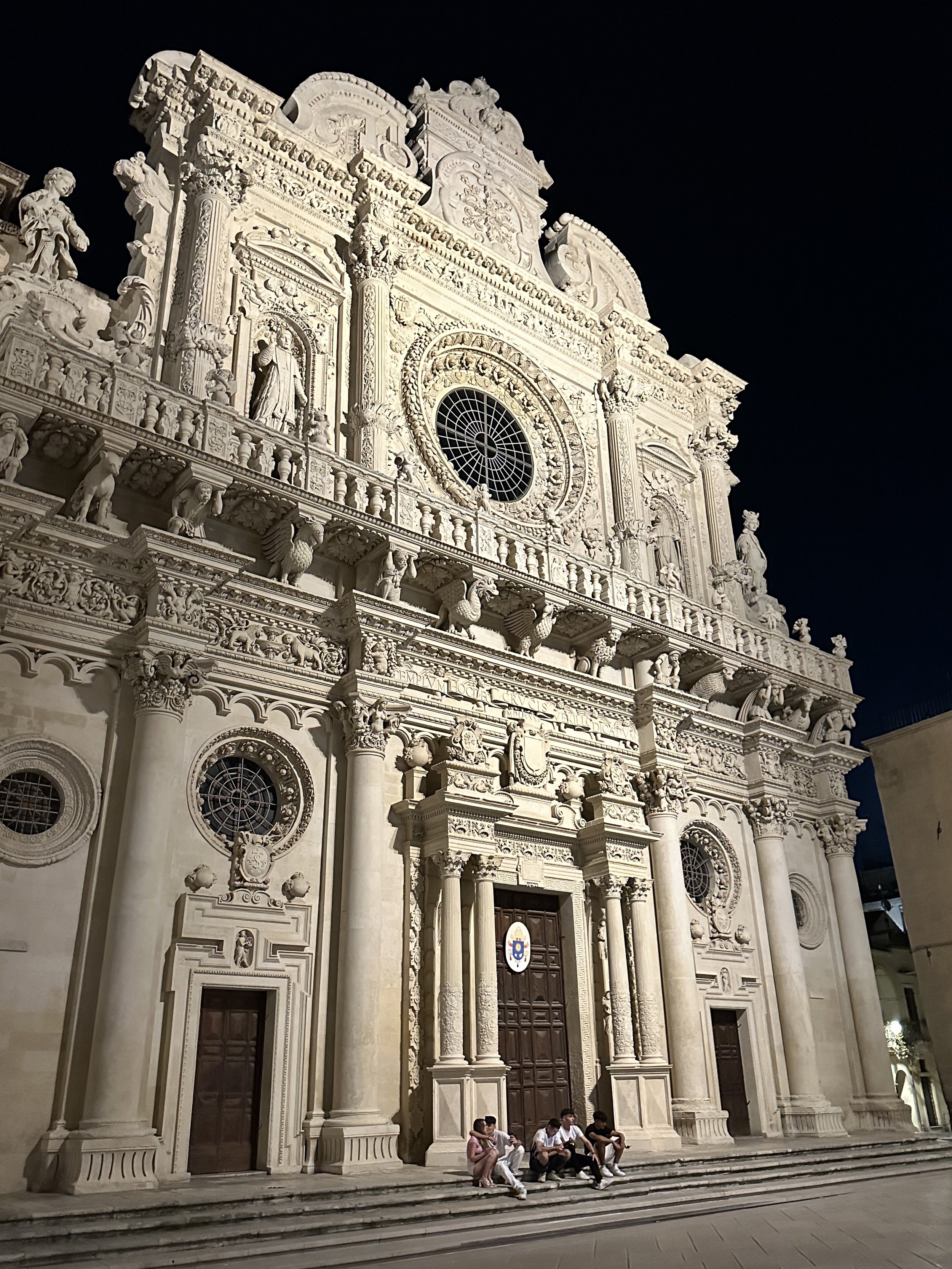Spots in Lecce
I gave an introduction to the Baroque Leccese in a previous post, but here I will go into more detail about two of the capolavori (masterpieces) in this artistic style. The other regional feature harks back further to the ancient Roman heritage in Lecce.
Basilica di Santa Croce
Florence has her ‘Santa Croce’ but here in Lecce, ‘the Florence of the south’ the Basilica di Santa Croce delights and impresses. Although founded in the 14th century, the construction took over two centuries. Giuseppe Zimbalo, the architect responsible for the appearance of much of the Baroque in Lecce, designed the upper facade. You will see marks of his overblown ornate style with animals, cherubs and beasts crowded in amongst floral friezes all centering around a rose window. As Lonely Planet describes it, the upper facade is “a swirling magnificent allegorical feast.”
The interior of the church is takes the shape of a traditional ‘Latin cross’ and the decoration is more ‘conventionally Baroque’ as well with some colorful paintings and decorated columns.
Duomo di Lecce
The Duomo was first built in the 12th century, but it was redesigned by the visionary Giuseppe Zimbalo in 1659. In fact, the master himself is buried in this church. The cathedral features an impressive bell tower which was also built by Zimbalo between 1661-1662; it is a particularly tall tower, at 72 meters with views stretching to the sea and even the mountains of Albania on clear days.
Roman Amphitheater
Centuries before the Baroque makeover, Lecce was a part of the Roman Empire, like most of the Italian peninsula. Lecce, though, was not a pivotal part per se. According to Atlas Obscura, it was “a small village that could be used as a resort or a trading port along the Mediterranean.” Still, in the 2nd century CE, during the rule of the Emperor Hadrian, an impressive amphitheater that could hold up to 15,000 spectators was built here. The theatre was constructed using the ubiquitous Lecce limestone that creates a powerful continuity between these recommended spots across 20 centuries, as the limestone was used in the Baroque period and is still used today. The spot is amazingly central, but this was not completely by design as the Roman Amphitheater was only discovered at the beginning of the 20th century. Some concerts and performances take place inside, again, continuing the legacy of the original purpose, but the interior is not always open to the public. You can get a very good view from the piazza, however.



